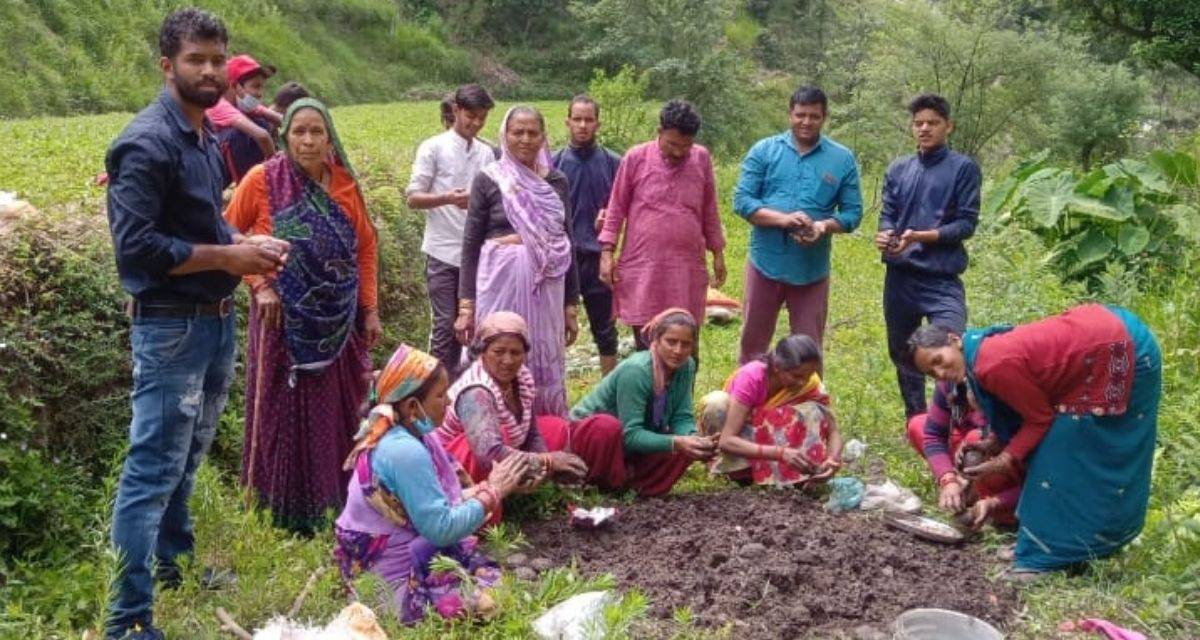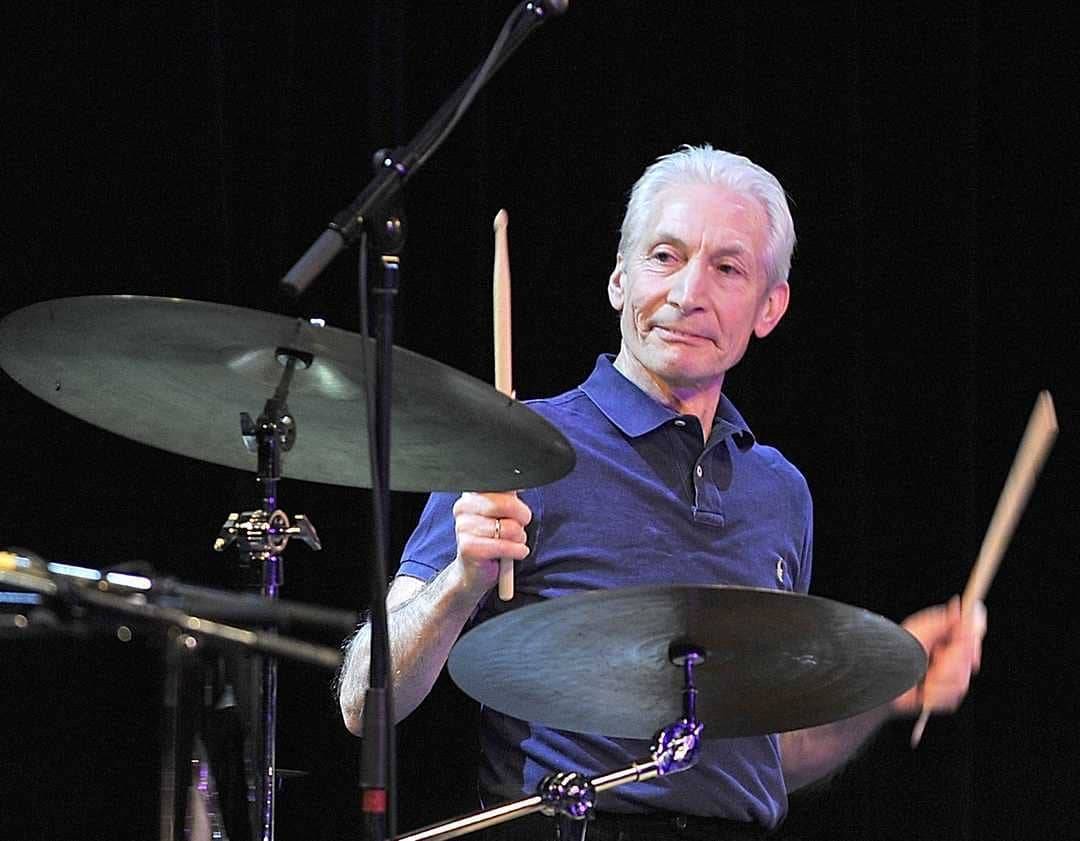NGOs like the Reliance Foundation have also embraced the campaign. Kamlesh Gururani, Project Head of the Foundation says, “For the last three years, we have been throwing seeds in the forests of Uttarkashi which appear to have grown…reports Varsha Singh.
The farms in the hilly villages of Uttarakhand, have been under regular attacks from wild animals over the last few years. These constant attacks have left several people dead, cattle injured, crops and buildings damaged and farmlands barren.
Recently, the plantation technique of seed bombing has been mooted as a solution to this problem. Seed bombs, or balls of seed covered in soil, are being thrown in the forests to ensure food for wild animals is available in the forest itself, thus negating the need for them to attack the farms. The campaign, which started in 2017, has now spread to the entire state, including Dehradun, Tehri and Nainital.
Since 2017, when the seed bombing initiative began, the number of hectares of crops damaged has dropped (though it rose again last year). Similarly, the number of injuries to humans, cattle and buildings have been fluctuating. So while the data suggests the results of the campaign are inconclusive still, it has continued to receive support from the community, civil society and government.
NGOs like the Reliance Foundation have also embraced the campaign. Kamlesh Gururani, Project Head of the Foundation says, “For the last three years, we have been throwing seeds in the forests of Uttarkashi which appear to have grown. In the next few years, we will be able to come to a conclusion on whether this method is effective or not. This year we have decided to mark a specified place to scatter the seed bombs. Then we will also be able to monitor them. We will also assess whether there has been any marginal increase in the yield of the farmers as compared to earlier. But to restrict the wildlife to the forest, we have to make arrangements for water along with food. Chalkhals have also been made at some places for this,” he said.
The seeds of the campaign
The seed bomb campaign was started in the state by Dwarka Prasad Semwal, Secretary, Himalayan Paryavaran Jadi Booti Agro Sansthan (JADDI), Uttarkashi, a non-governmental organisation focused on environmental conservation. Explaining the idea behind the campaign, Semwal said, “We planted bare seeds in the forest in 2017 but most of the seeds were lost, eaten by birds and trampled by animals. We did not even achieve one per cent success. To protect the seed, we made a ball of soil, manure and water and put two seeds in it. We named them beej (seed) bombs. We started this campaign on a small scale in a few villages and then took it to the entire state.”
Today, the campaign is active in many villages of Uttarkashi, where women and youth together make seed bombs and scatter them in the forests. Seed bombs are prepared in the month of June-July just before the onset of rains as the seeds are most likely to germinate in wet soil. The clay balls are dried in the shade for three to four days until they are neither too hard nor too soft before being taken into the forest.
Tulsi Devi, the former village head of Nathuakhan village of the Ramgarh block in Nainital is optimistic about these seed bombs. “We made seed bombs with seeds of pumpkin, gourd, zucchini, cucumber, corn and pulses. Just before the rains, some seed bombs were thrown towards the forest. If we grow these vegetables and fruits near the forest, then our agriculture will survive. This is our third year of making seed bombs,” she said.
The seeds are chosen carefully, in accordance with altitude and soil, said Dwarika Prasad. His NGO consulted with several experts like the Vice-Chancellor of HNB Garhwal University, Dr Annapurna Nautiyal; NK Singh, Assistant Horticulture Officer at Uttarkashi; Dr Pankaj Nautiyal, Krishi Vigyan Kendra at Chinyalisaur, and few others to pick the seeds.
This year, seed donations are also being sought from the community. Semwal explained, “There is a feeling of conservation attached to seed donation. Many people have donated seeds; some give two, some give 10.”
Akash Nautiyal, a member of the Mangal Youth Foundation of Uttarkashi, said that they have been asking for seed donations from every house they go to. “Farmers keep traditional seeds in their homes even today, which they sometimes give to us,” he said.
In Nainital, Jagdish Chandra Jitu works closely with the local youth for the seed bombing campaign. He returned to his village, Nathuakhan, last year after the pandemic struck. “Looking at what Dwarika Prasad Semwal ji was doing, I also made seed bombs and threw them in the forest during the lockdown last year. After 10-15 days many seed bombs were seen sprouting. The places where we had thrown the seed bombs are now green. It is our endeavour to take this campaign forward every year. Then we will see good results from it.”
A zero-budget success story
Dr Arvind Darmora, director, Parvatiya Vikas Shodh Kendra (Centre for Mountain Development), HNB Garhwal University in Srinagar tehsil, Uttarakhand, believes that the success rate of seed bomb campaigns is very high, especially relative to the costs involved when compared to large-scale government plantations. “Despite spending lakhs of rupees, plantation programmes are only successful to the tune of 20-30 per cent. But the seed bomb campaign is up to 80 per cent successful,” he explained. Beej bombing, meanwhile, is a zero budget campaign where seeds, soil and fertilizers are all sourced through enthusiastic community participation.
Darmora recalled an example of the students of Kamad Intermediate College in Uttarkashi who left seed bombs in the forests of Buda Kedarnath from Anyar Khal in Uttarkashi. “A nursery of about three lakh plants has been prepared there. This campaign is strengthening people’s bond with the forest,” he said.

Savitri Saklani, a teacher of Rajkiya Kanya Vidyalaya (Government Girls School) in Cheenakholi village of Dunda block of Uttarkashi, said she and her students were also inspired by the seed bombing campaign. “The students collected soil, manure and seeds. We made over a thousand seed bombs. There is a forest near our school. The girls threw the seed bombs in the forest. Only girls here go to the forest to get grass for their homes. So, when they went, they also took the seed bombs with them and left them in the forest,” said Saklani.
Dr Rajnish Singh, the Chief Horticulture Officer of Uttarkashi, stated that despite the dangers that forest fires pose to these young plants, he has been suggesting seed bombing to villagers who come to him with complaints about wild animals destroying their crops. Sandeep Kumar, former Divisional Forest Officer of Uttarkashi has been promoting it as a solution to landslides. The seed bomb experiment was also tried in parts of the Rajaji Tiger Reserve, where forest guards walk in the forest carrying seed bombs, according to SS Rasaily, Additional Chief Conservator of Forests in Uttarakhand Forest Department.
In addition to enthusiastic support from the forest department, many important people like Governor Baby Rani Maurya and former Chief Minister Trivendra Singh Rawat have been endorsing the campaign, especially during the Harela festival (a folk festival in Uttarakhand). So while the jury is still out on whether seed bombs are enough to meet the stated objective of reducing man-animal conflict in Uttarakhand, the community is determined to keep trying.
(The author is a Dehradun-based freelance journalist and a member of 101Reporters.com, a pan-India network of grassroots reporters)
ALSO READ-Himachal lights up rocky villages with solar power









